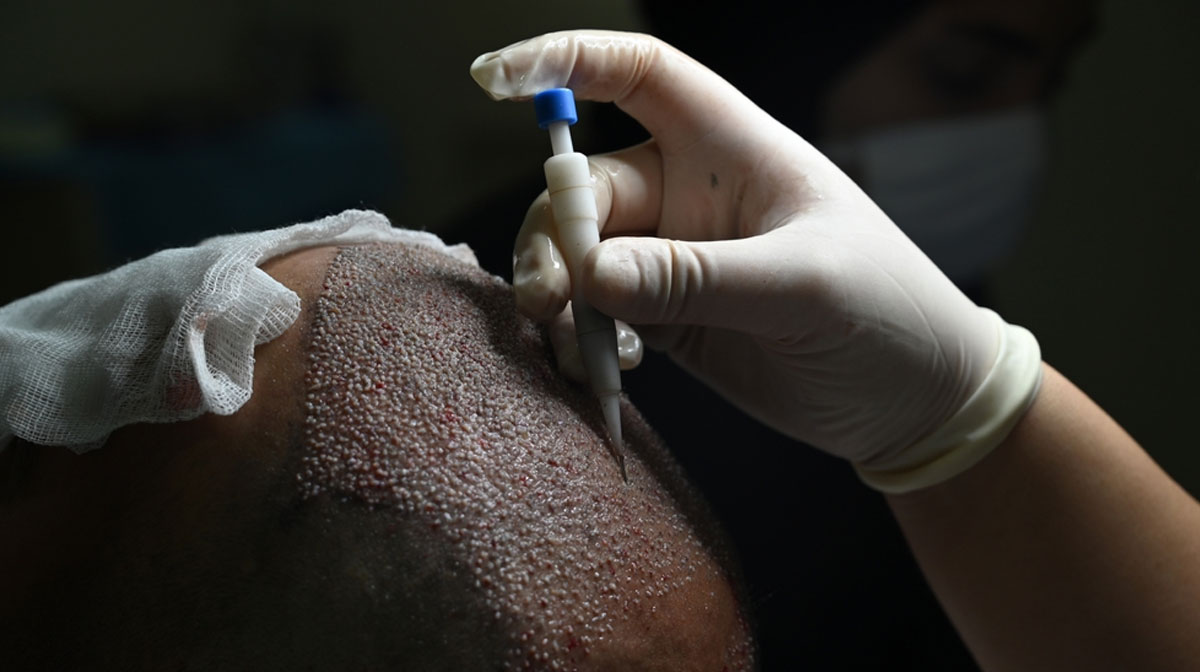- Malad West, Mumbai
- +91-7400188399
- mccmumbaicosmeticcentre@gmail.com
Hair Transplant Treatment
Hair Transplant Treatment in Mumbai

What is a Hair Transplant?
Hair Transplant Treatment in Mumbai is an effective solution for individuals experiencing hair loss, which can significantly impact confidence and self-esteem.
A hair transplant is a cosmetic technique performed to resolve the problem of hair loss by moving hair follicles from one part of the body to the affected areas. This surgery is mainly used to treat male pattern baldness but can also be useful for women with hair thinning or loss.
Restore your hair and confidence with expert hair transplant services in Malad, Mumbai at Mumbai Cosmetic Centre. Achieve natural results. Book your consultation today!
Two main hair transplantation techniques
1. Follicular Unit Transplantation (FUT)It is a procedure of removing a strip of scalp from one area and then placing them in another area. The surgeon then dissects the strip into individual follicular units containing 1-4 hairs each before implanting it.
2. Follicular Unit Extraction (FUE)It is a more advanced and minimally invasive technique that involves harvesting individual follicular units directly from one area and the transplanting into another site, following the natural hair growth pattern for a seamless and natural-looking result.
Top Hair Transplant Experts in Mumbai
FAQs
1. Am I a suitable candidate for a hair transplant?
Good candidates for hair transplants are individuals with stable hair loss patterns, sufficient donor hair supply, and realistic expectations. A discussion with a hair transplant specialist can determine your candidacy based on various factors such as age, overall health, and hair loss progression.
2. Is hair transplant surgery painful?
Hair transplants are performed under local anesthesia, so you should not feel strong pain during the surgery. Some discomfort or sensitivity in the donor and recipient areas is normal after the procedure, but this can be managed with prescribed medications.
3. How long does it take to see results after a hair transplant?
The timeline for visible results varies among individuals, but most patients start to see new hair growth within 3-6 months post-transplant. Full results, including thicker and denser hair, are typically evident after 9-12 months as the transplanted follicles continue to grow and mature.
4. Are there any complications associated with hair transplants?
Like any surgical procedure, hair transplants carry some risks, although they are generally considered safe when performed by experienced surgeons. Potential risks include infection, bleeding, scarring, and temporary shock loss (temporary shedding of existing hair near the transplant site). Following postoperative care instructions and choosing a reputable surgeon can help minimize these risks.
5. How long do hair transplant results last?
Hair transplant results are typically permanent. However, it's important to note that while the transplanted hair is permanent, natural hair aging and thinning can still occur over time, necessitating maintenance and potential touch-up procedures.
6. Can women undergo hair transplant surgery?
Yes, women experiencing hair thinning or loss can benefit from hair transplant surgery. However, the underlying causes of female hair loss may differ from male pattern baldness, so a thorough evaluation and diagnosis by a qualified specialist are crucial before proceeding with a transplant.



